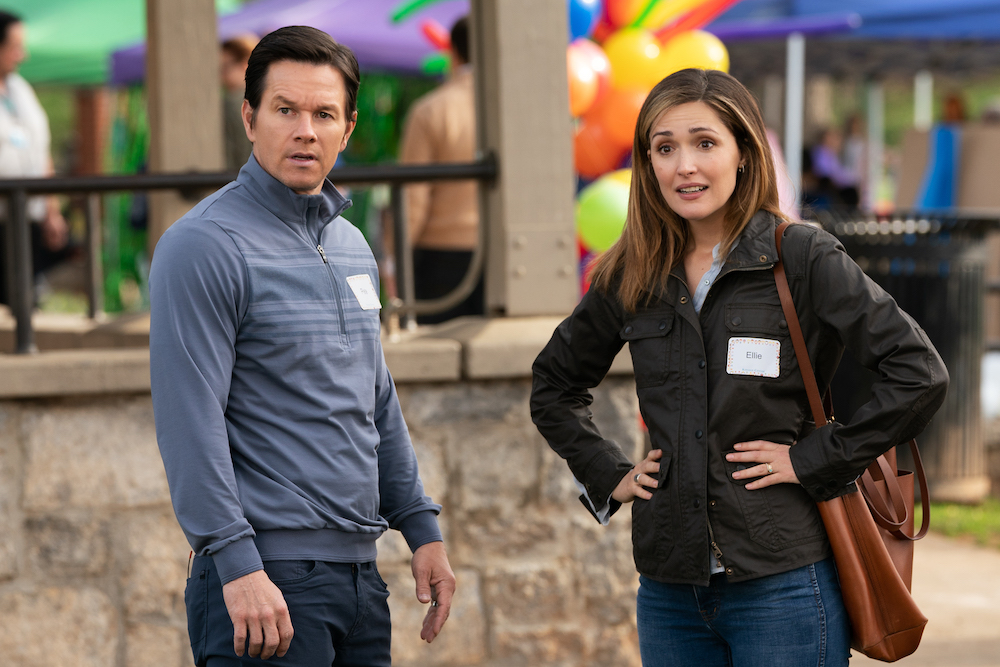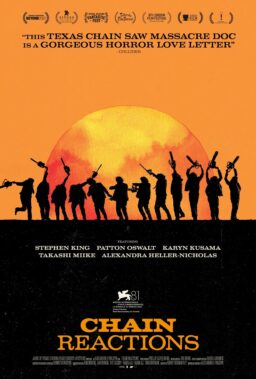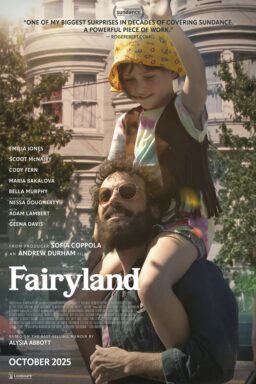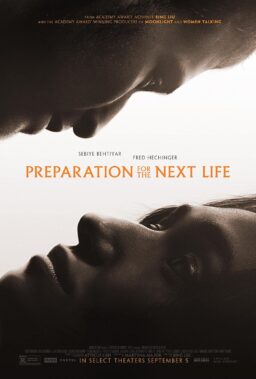<span class="s1" This is the third time writer/director Sean Anders has picked Mark Wahlberg to play a suburban dad in a comedy about non-traditional families. But this time, it’s personal. Following the two “Daddy’s Home” movies, “Instant Family” is inspired by Anders’ own experiences as the foster father and then adopted father of three siblings. Like Pete (Wahlberg) and Ellie (Rose Byrne) in the film, Anders and his wife went from zero children to three in one day, and he wanted this film to show how funny, how sweet, and most of all normal it is.
In an interview with RogerEbert.com, Anders spoke about making this different from other adoption films, and about the girl he did not get to adopt who inspired one of the film’s most important characters.
Was there anything your children especially wanted to be in the movie—or didn’t want in the movie?
They were just generally pretty helpful and excited about it. They didn’t have any strong requests in either direction. We would talk a lot about when they first came to live with us. When I first started writing about it, it was about three years after they arrived. We spent a little time talking about those days and what they remember and what we remember. My oldest son really had forgotten a lot of things. And my wife and I sometimes are talking about a time in the past and have to remind ourselves that we didn’t have the kids yet. They are so much a part of your life; you forget what it was like before they arrived.

In real life, you did not adopt a teenager, as Pete and Ellie do in the film.
There is an interesting story about that character, Lizzy, played by Isabela Moner came to be. When my wife and I were going through the process, we went to an adoption fair, just like the one in the movie, and just like in the movie the teenagers were off by themselves. We did not want a teenager. We did not feel ready for that in any way. But like the characters in the movie we ended up meeting this teenager and she was very impressive and cool and had these younger siblings she had been taking care of. We were really scared at the thought of taking a teenager but we wrote them down on our sheet and we were matched with them.
Where it changes from the movie is that a couple of weeks later, as we were acclimating to the idea and getting the process going, we got a call from our social worker who said the teen girl has decided to refuse the placement because she is really holding out hope her mother will come back. There wasn’t anything we could do about that, so it just scuttled. The social worker called back after that and said, “There are three other kids, if you’re still interested.” Those are now my kids and they were six, three, and eighteen months at the time. But that other girl, I never forgot her, and she was the genesis of the Lizzy character. When we made the movie, I really wanted one of the kids to be a teenager, so that is where it started. And then I sat down with a bunch of other adoptive families and teenagers who had grown up in care and been adopted to research the Lizzy part of the story.
It’s a very warm-hearted family story, but you are very frank about some of the problems, including a girl originally portrayed as a success story who turns out to be struggling with relapse into drug use.
We tried with several scenes in the movie to be frank about the feelings and the way things really work. It is not easy and we didn’t want to sugarcoat the process. We didn’t want to make a movie that would convey, “Oh, this is easy-peasy.” What we did want to covey is that this is just parenting. Whether you have biological kids or you adopt kids, you’re going to have some problems. You’re going to have some strife. A lot of these kids are coming from trauma. They’re coming from difficult situations. What I wanted to do differently with this movie is, I feel like most movies on this topic focus on the trauma and send people away with this feeling that these kids are damaged and only angels are good enough to help these kids. None of that is true. I’m not an angel; I’m not special. None of the people we met with are angels. The kids were not these unreachable troubled kids. I wanted to make a movie that accentuated the other side of it, the joy, the laughter, the love, but not shy away from the trauma or the tragedy of it.

This is your third film with Mark Wahlberg. What do you like about working with him?
Mark is one of those rare guys who can do it all. “The Fighter,” “Boogie Nights,” “2 Guns,” “I Heart Huckabees,” “Daddy’s Home.” He can do a little bit of everything and that was what we needed in both of these roles, how absolutely morose you feel in the scene with the birth mother, the frustration and anxiety, but also people who are absolutely hilarious. It was fun in this movie because Mark gets to show a couple of gears he doesn’t get to show very often. He’s so damn sweet in this movie, even when he’s frustrated and crazy and angry. He really tapped into the real dad that’s inside him. He was really feeling these scenes as they were happening. It was the real dad inside of Mark letting us know how much heart the guy has.
Do you hope this movie will inspire people to foster or adopt?
Of course I absolutely hope that, but that’s not really the point. The greater point is that I want people to go on a more complete journey with a family. First you take them through the idea, then meeting with the social workers and the nuts and bolts and the world of it, and meeting the kids, and the frustration, and come out the other side where you feel good about who these kids are and who these families are. When you hear these stories in real life, they’re amazing stories and very compelling and very inspirational. I want people who see this movie to have a better idea of who these people are.

Did you have a “Daddy” moment like the one in this movie, where Pete and Ellie begin to think the kids have accepted them?
Oh, yes, our daughter moved in with us on her third birthday and she was very emotionally sophisticated. From very early on she would call my wife “Mommy” but very pointedly not calling me “Daddy.” We would say, “Goodnight, sweetheart; I love you!” and she would say, “Goodnight, Mommy; I love you! Goodnight Sean!” It was like a nightly knife in the heart. Before I got that “Daddy,” the only time I got hugs from her was when she had a nightmare. So it would be 1:00 in the morning and she would be crying with a nightmare and as awful as that sounds, I would be like, “Awesome!” and I would run into her room and get a nightmare hug. And she would forget about it in the morning. And then one night she was very nonchalantly saying, “Goodnight Mommy, Goodnight Daddy.” I was trying to be cool about it and just said, “Goodnight!” But then I went out of the room and said, “Oh my God!”
What brings most foster parents to the system?
It’s kind of all over the place, but yet it’s the same. We represented some of the archetypes in the film. So many people come in through the church. And then there are same-sex couples. And couples who can’t conceive. There are all these different reasons. But there’s also this common cause among all of them that they have some sense of what it must be like not to have a family, and that is what really drives people. “What would my life have been like without my family?” The thought of that gets people motivated. They want to be that family for someone.












